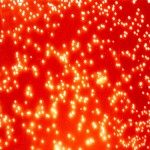Link to Pubmed [PMID] – 39743587
Link to DOI – 10.1038/s41586-024-08309-9
Nature 2025 Jan; ():
The dynamics of the genetic diversity of pathogens, including the emergence of lineages with increased fitness, is a foundational concept of disease ecology with key public-health implications. However, the identification of such lineages and estimation of associated fitness remain challenging, and is rarely done outside densely sampled systems1,2. Here we present phylowave, a scalable approach that summarizes changes in population composition in phylogenetic trees, enabling the automatic detection of lineages based on shared fitness and evolutionary relationships. We use our approach on a broad set of viruses and bacteria (SARS-CoV-2, influenza A subtype H3N2, Bordetella pertussis and Mycobacterium tuberculosis), which include both well-studied and understudied threats to human health. We show that phylowave recovers the main known circulating lineages for each pathogen and that it can detect specific amino acid changes linked to fitness changes. Furthermore, phylowave identifies previously undetected lineages with increased fitness, including three co-circulating B. pertussis lineages. Inference using phylowave is robust to uneven and limited observations. This widely applicable approach provides an avenue to monitor evolution in real time to support public-health action and explore fundamental drivers of pathogen fitness.

